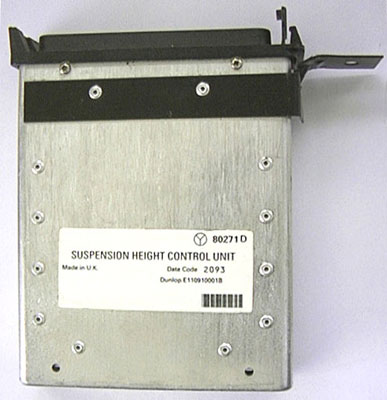 LUCAS EAS (CLASSIC) - System Overview
LUCAS EAS (CLASSIC) - System Overview LUCAS EAS (CLASSIC) - System Overview LUCAS EAS (CLASSIC) - System Overview |
| The EAS (Electronic Air Suspension) system Manufactured by Lucas developed for the Classic Range Rover. When working correctly, the system gives the vehicle a level of ride comfort and adjustability that sets it apart, but sadly the system is very prone to problems especially as it ages and large bills at dealerships are not uncommon. |
 SM025 - LUCAS EAS (CLASSIC) - System Help file SM025 - LUCAS EAS (CLASSIC) - System Help file |
| Version 1.27 |
 LUCAS EAS (CLASSIC) - Known Fitments LUCAS EAS (CLASSIC) - Known Fitments |
||||||||
Vehicle makes, models and variants known or believed to be using this vehicle system, required diagnostic lead and degree of known compatibility.
|
 LUCAS EAS (CLASSIC) - Physical Details LUCAS EAS (CLASSIC) - Physical Details |
 |
 LUCAS EAS (CLASSIC) - Pin Outs LUCAS EAS (CLASSIC) - Pin Outs |
||||||||||||||||||||||||||||||||||||||||||||||||||||||||||||||||||||||||
Details of the pin usage for the ECU connector(s).
|
 SM025 - LUCAS EAS (CLASSIC) - Diagnostic Capabilities (Read Fault Codes) SM025 - LUCAS EAS (CLASSIC) - Diagnostic Capabilities (Read Fault Codes) |
| The Air suspension systems can self detect up to 31 faults, ranging from those causing a full system shutdown, to those simply logging slightly abnormal events in the normal course of vehicle usage that don't even create a warning. The most popular of these is that a height sensor has been out of range, usually caused by excessive articulation of a wheel (in a pothole or up a curb). A momentary disconnection of a poor connector could have also caused it. Sometimes multiple faults may be logged which may have been caused by the same fault all pointing to the same guilty party: height sensor out of range, height sensor open circuit. In this instance, replacing the specified sensor will correct the problem, but a recalibration of the system can be tried first as this will sometimes be sufficient to overcome the problem without having to replace any parts. A good road-test is always essential with any air suspension problems including both rough terrain that makes the system operate at the limits of articulation and also some motorway (or similar) driving in order to check the correct responses to specific speeds over the defined timing periods. |
 SM025 - LUCAS EAS (CLASSIC) - Diagnostic Capabilities (Clear Fault Codes) SM025 - LUCAS EAS (CLASSIC) - Diagnostic Capabilities (Clear Fault Codes) |
| This function first reads the fault code memory to ensure that there are faults to clear and if there are completely erases and clears the fault code memory. Having deleted the faults it then re-checks the fault memory to ensure that it is clear and reporting success if it is. Failure to clear the fault memory successfully is usually due to the system re-logging the fault the moment the fault memory is clear. This indicates that the fault has not been rectified properly and as far as the system is concerned still exists. The re-check for successful clearing of the fault code memory may pass but then the system may re-log the fault shortly after. |
 SM025 - LUCAS EAS (CLASSIC) - Diagnostic Capabilities (Settings) SM025 - LUCAS EAS (CLASSIC) - Diagnostic Capabilities (Settings) |
Values, configuration settings, and other stored information which can be read from the ECU, edited and then rewritten back. Read settings can also be stored as a standard HTML page for reference. These pages can then later be re loaded and re written back to the ECU. Please note that some values may be read only due to the fact that they are supplied from the ECUís ROM or are internally calculated.
|
 SM025 - LUCAS EAS (CLASSIC) - Diagnostic Capabilities (Inputs) SM025 - LUCAS EAS (CLASSIC) - Diagnostic Capabilities (Inputs) |
Realtime live display of the information the electronic control unit of the selected vehicle system is currently deriving from its input sensors.
|
 SM025 - LUCAS EAS (CLASSIC) - Diagnostic Capabilities (Outputs) SM025 - LUCAS EAS (CLASSIC) - Diagnostic Capabilities (Outputs) |
| Choice of outputs that can be tested. Note: more than one valve can be opened at any one time so that any combination of air springs can be inflated or deflated.
|
 SM025 - LUCAS EAS (CLASSIC) - Diagnostic Capabilities (Other) SM025 - LUCAS EAS (CLASSIC) - Diagnostic Capabilities (Other) |
Choice of functions that can be performed.
|